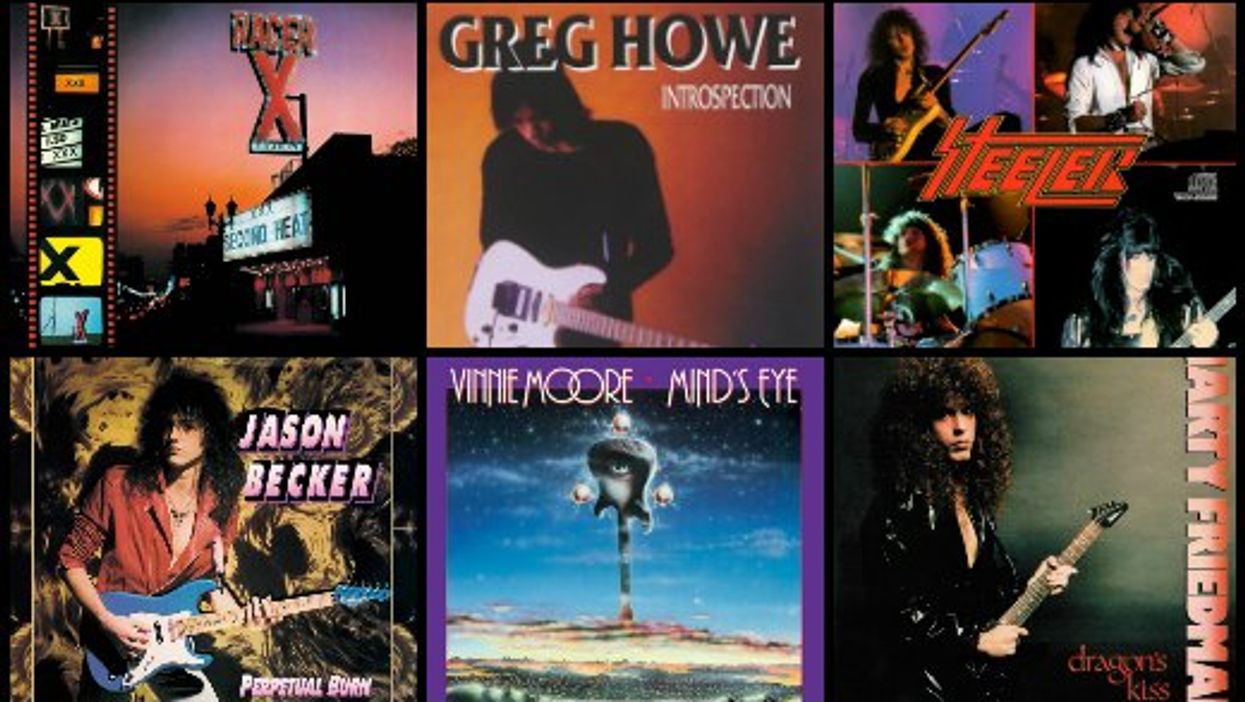Colorado Springs, CO (June 13, 2013) -- Best known for his Grammy-winning recording of “Moonlight in Vermont” with tenor sax titan Stan Getz, Johnny Smith was also respected for his blistering single-note lines, unsurpassed solo-guitar chops, and beautiful clean tone. An inspiration to Pat Martino, George Benson, Bill Frisell, Jack Wilkins, Jack Petersen, Russell Malone, and many, many others, Smith enjoyed a long, celebrated career.
Smith started his musical career working in pawnshops that allowed him to use their guitars to teach and play—as long as he kept the store’s stock in tune. During World War II he joined the Air Corps hoping to be a pilot, as he’d had some past flying experience. Rejected as a pilot due to less-than-perfect vision in his left eye, Smith was given the option to go to mechanic school or join Air Corps band. He chose the latter and was given a cornet, a method book, and a chair in the band.
After returning from the war, Johnny began working the studio scene in New York City as a session guitarist for records, radio, and TV. His strong music-reading chops and incredible versatility made him one of the most in-demand guitarists of the 1950s. His fame only grew as he recorded under his own name. Smith’s affiliation with the Royal Roost and Verve labels turned him into a guitar sensation, and in 1952 he earned a Grammy for his recording of “Moonlight in Vermont.” To this day, many guitarists shy away from playing and recording solo versions of this tune, fearing they’ll be compared to Smith and fall short. Known for his use of closed voicings, Smith was a master of smooth harmonic transitions.
In 1955, Smith worked with Guild to produce the first signature Johnny Smith guitar—the Guild Johnny Smith Award—and it entered production in 1956. In 1961, Smith was approached by Gibson to design another archtop. Known for their strong acoustic tone, Gibson Johnny Smith models remain highly sought after by guitar collectors around the world.
Ultimately Gibson moved their electric and archtop guitar operation from Kalamazoo to Nashville, and in 1989 Smith transferred his signature model to Heritage Guitars. In 2004, he moved his signature model back to Guild because archtop guru Bob Benedetto was now involved with the company. Benedetto oversaw the design and construction of the Guild Benedetto Johnny Smith Award until he left Fender, now Guild’s parent company, in 2006. Guild Benedetto signature models are known for their playability and lush, evenly balanced tone.
As an educator, Smith wrote books for Mel Bay, gave private lessons, and taught at the pioneering Stan Kenton Camps. He was known for his profound knowledge of music theory and the creative ways he approached fretboard harmony. Though the guitar is notated an octave higher than it sounds, Smith believed it should have always been notated on the grand staff in actual pitch. Many of his books are written this way, making it difficult for some guitarists to absorb Smith’s methods.
In 1958, Smith moved his family from New York to Colorado Springs and opened up a music shop, which became known for quality customer service, a strong repair shop, and expert instruction. Smith taught for years out of the store—Bill Frisell was one of his students—and continued to be an active performer before retiring from the guitar in the mid 1980s.
An avid fisherman, hunter, and pilot of small aircraft, Smith loved the outdoors. In a freak accident involving an airplane bucket seat, Johnny cut off the end of one of his left-hand fingers. The remaining section of the finger had to be sown into the palm of his hand while the finger healed and took a skin graft. It was during this time that Nokie Edwards and The Ventures recorded Smith’s tune “Walk, Don’t Run.” It was a huge hit and financially allowed Smith the time he needed to heal. He recovered from the accident and continued to play and teach.
Known throughout his career as one of the kindest and genuinely nice people in the world of jazz, Smith and his music inspired countless guitarists. His compositions, arranging techniques, and technical prowess make Johnny Smith a true guitar legend.





![Rig Rundown: Russian Circles’ Mike Sullivan [2025]](https://www.premierguitar.com/media-library/youtube.jpg?id=62303631&width=1245&height=700&quality=70&coordinates=0%2C0%2C0%2C0)












![Rig Rundown: AFI [2025]](https://www.premierguitar.com/media-library/youtube.jpg?id=62064741&width=1245&height=700&quality=70&coordinates=0%2C0%2C0%2C0)












 Shop Scott's Rig
Shop Scott's Rig







 Zach loves his Sovtek Mig 60 head, which he plays through a cab he built himself at a pipe-organ shop in Denver. Every glue joint is lined with thin leather for maximum air tightness, and it’s stocked with Celestion G12M Greenback speakers.
Zach loves his Sovtek Mig 60 head, which he plays through a cab he built himself at a pipe-organ shop in Denver. Every glue joint is lined with thin leather for maximum air tightness, and it’s stocked with Celestion G12M Greenback speakers.












![Devon Eisenbarger [Katy Perry] Rig Rundown](https://www.premierguitar.com/media-library/youtube.jpg?id=61774583&width=1245&height=700&quality=70&coordinates=0%2C0%2C0%2C0)






